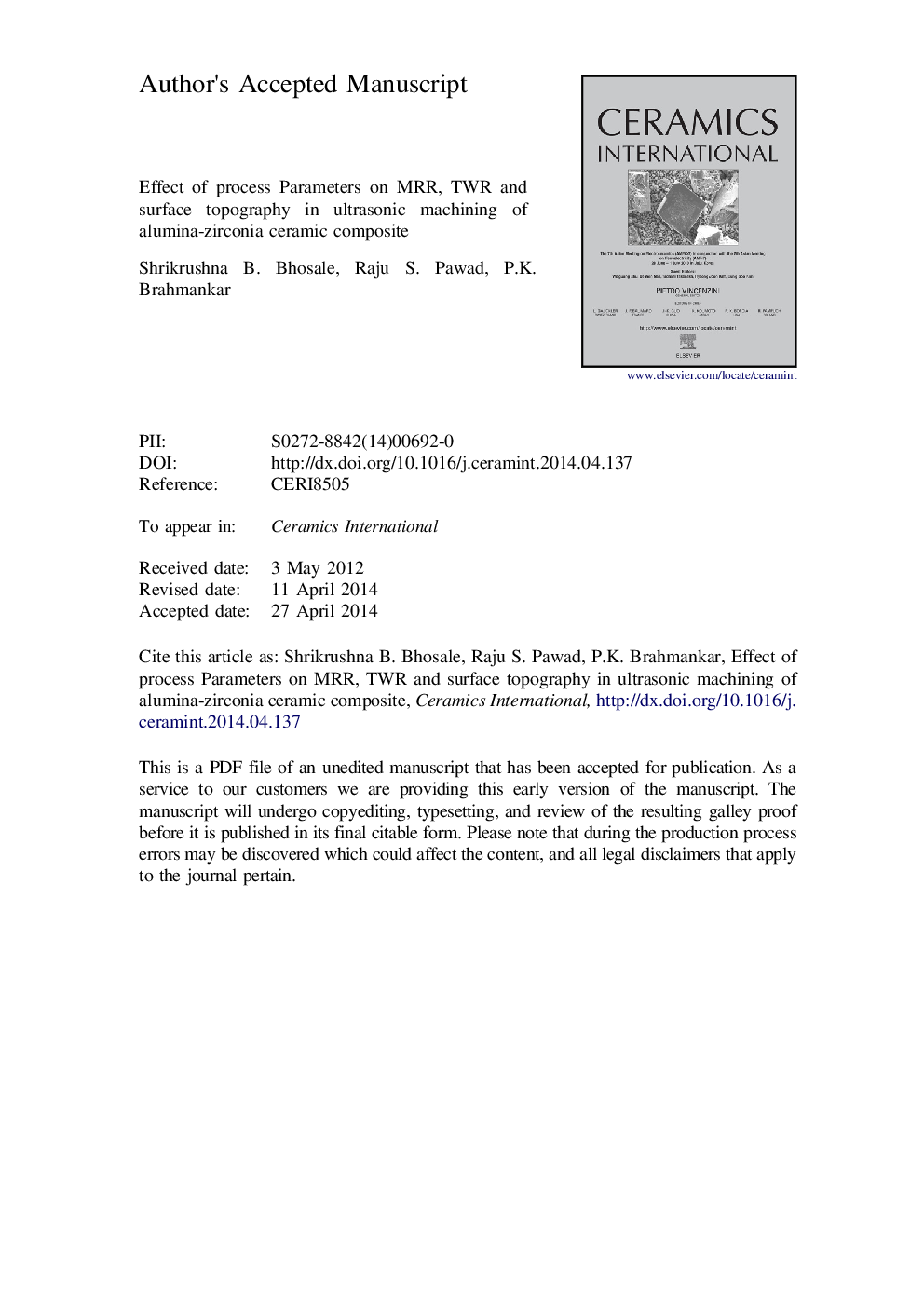| Article ID | Journal | Published Year | Pages | File Type |
|---|---|---|---|---|
| 10625265 | Ceramics International | 2014 | 11 Pages |
Abstract
The paper reports experimental investigation and analysis of material removal rate, tool wear rate, and surface roughness in ultrasonic machining of alumina-zirconia ceramic composite (Al2O3+ZrO2). The experiments were conducted using the full factorial DoE method with an L8 (23) orthogonal array. The effects of amplitude, slurry concentration and slurry type on the above responses were investigated. Analysis of results indicates that the amplitude has a significant effect on the MRR and surface roughness. An increase in amplitude causes higher MRR and surface roughness. Pure SiC abrasives give better surface finish, whereas the mixed abrasives produce higher tool wear and MRR. The machined surface topography consists of the alterations such as microcavities, plastically deformed layers and fragments of zirconia spread on the surface.
Related Topics
Physical Sciences and Engineering
Materials Science
Ceramics and Composites
Authors
Shrikrushna B. Bhosale, Raju S. Pawade, P.K. Brahmankar,
